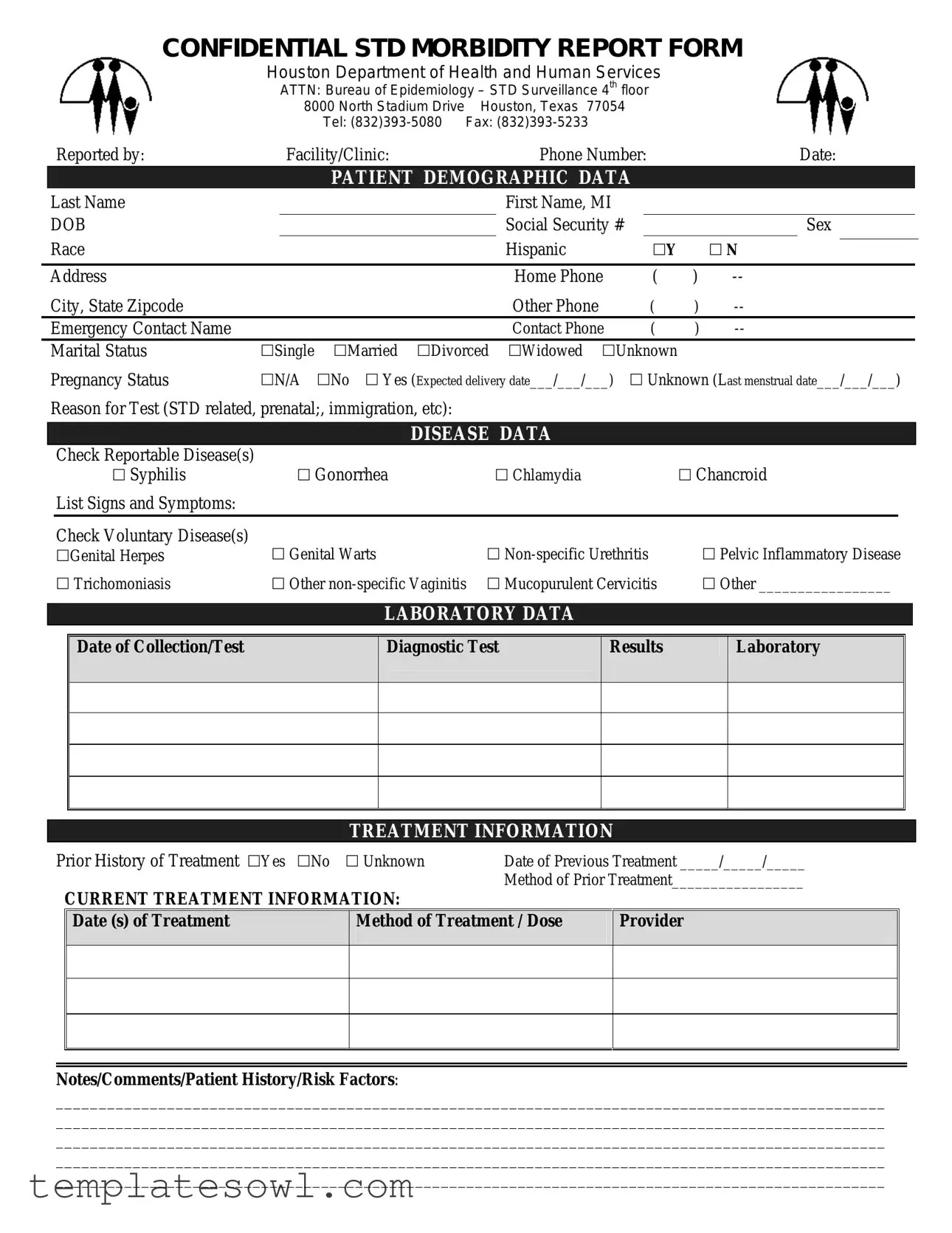Filling out the Confidential STD Morbidity Report form can seem straightforward, but many individuals make common mistakes that can lead to issues down the line. First, one of the most frequent errors is providing incomplete patient demographic data. Missing a last name or date of birth can create confusion and hinder accurate tracking of cases.
Another mistake occurs when people neglect to include the correct Social Security number. This is crucial for identifying patients and ensuring confidentiality. Omitting it can slow down processing and potentially delay necessary follow-up.
When it comes to checking the reportable diseases, individuals sometimes fail to mark all applicable options. For example, if both Gonorrhea and Chlamydia are present, both should be indicated. Not doing so could lead to underreporting and skew public health data.
Additionally, some neglect to provide complete contact information. The form requests various phone numbers and an emergency contact, yet many leave these fields blank. Complete contact details are important for follow-ups and ensuring the patient receives appropriate care.
People also often forget to specify the reason for the test. Stating this is important, as it provides context for healthcare providers. A simple note about whether the test is for STD-related symptoms, prenatal care, or immigration can be very helpful.
Providing vague or incomplete notes about patient history and risk factors is another significant oversight. These details help healthcare providers understand the patient’s situation better. Comprehensive notes can guide treatment and outreach efforts efficiently.
Moreover, failing to document prior treatment accurately can lead to confusion. If previous treatments are recorded incorrectly or not at all, providers may prescribe the wrong medication or dosage, affecting the patient's recovery.
On occasion, people forget to include laboratory data, such as the date of collection and test results. This information is essential for tracking disease progress and for the effective management of patients. Leaving this section incomplete can lead to misinterpretations of a patient's health status.
In addition to these errors, individuals sometimes overlook checking voluntary diseases. Not checking them can lead to a lack of awareness about potential health risks and necessary screenings that may not be otherwise highlighted.
Lastly, one of the most common mistakes is submitting the form without a signature or date. This may seem small, but it is essential for finalizing the report. Incomplete submissions can delay processing and result in the need for resubmission, causing unnecessary interruptions in patient care.

